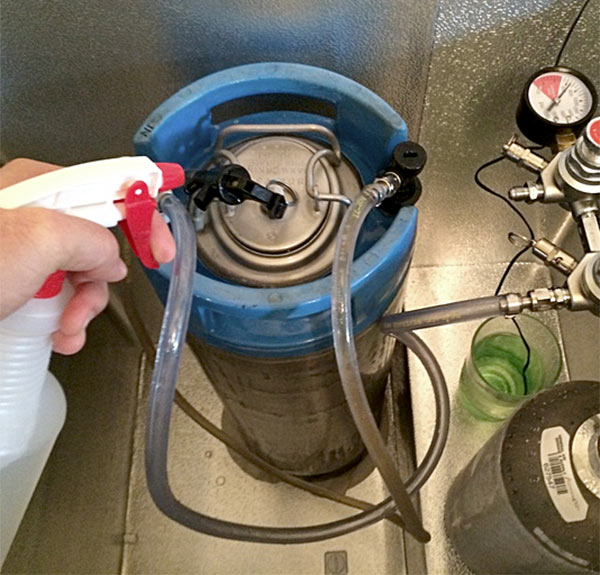
A homebrew keg system is nothing short of awesome. You essentially fill one huge “bottle” and have precise control over the carbonation level. However, due to the amount of connections and seals, keg system leaks can potentially cause a devastating homebrew disaster.
To avoid depleting your CO2 tank or losing an entire batch of beer, take the following steps to test for keg system leaks and ensure all of your connections, fittings and seals are air tight and functioning properly.
Bubbles Are Bad
The following steps can be done with beer in the keg, though it may be better to test the connections with water prior to racking if you have any specific concerns or haven’t used the keg equipment in a while. That way if components need to be replaced, you don’t have to worry about what to do with the beer that’s already been racked into the keg. Always conduct this process after racking beer into the keg and putting it under pressure to double check everything is sealed air tight.
- Fill the keg with liquid and apply pressure from the CO2 regulator. Set a level of pressure you plan on actually using to get an accurate experience.
- Mix a solution of water and no-rinse sanitizer, following the suggested ratios provided by the sanitizer manufacturer’s instructions. You will need about a cup (8 fl. oz) of solution for the entire process. If you have a spray bottle, this can make for quicker and less-messy leak testing.
- With the keg under pressure, pour or spray the water-sanitizer solution on all fittings, connections and sealed areas of the keg. This includes: gas and liquid connectors, quick disconnects, the hatch of the keg, junctions with the regulator and connection to the picnic tap or faucet. Pour/spray the solution liberally.
- As you spray the fittings, connections and seals, look for signs of bubbling. These bubbles can be quite small, but should be obvious to the eye. Bubbles indicate there is a break in the airtight seal causing gas or liquid to escape.
- Address areas that bubble by tightening components, lubing seals and/or replacing parts if broken or malfunctioning.
- Continue the testing process until all fittings, connections and seals no longer bubble
For more information on the kegging homebrew, see our guide on An Introduction to Kegging Homebrew.



Share Post